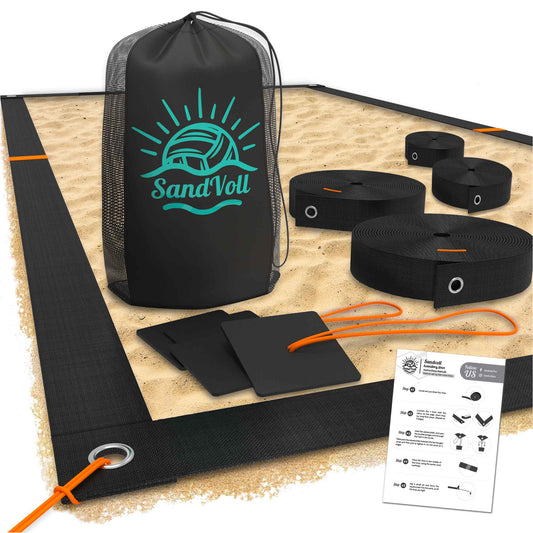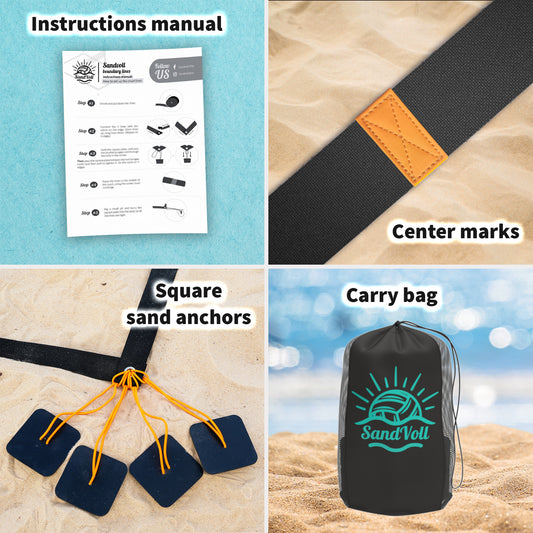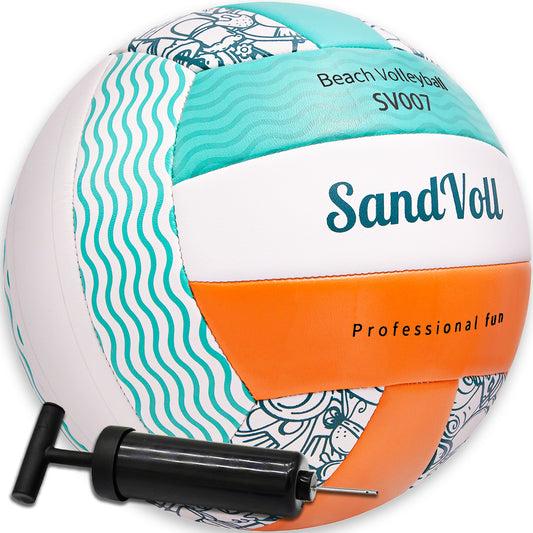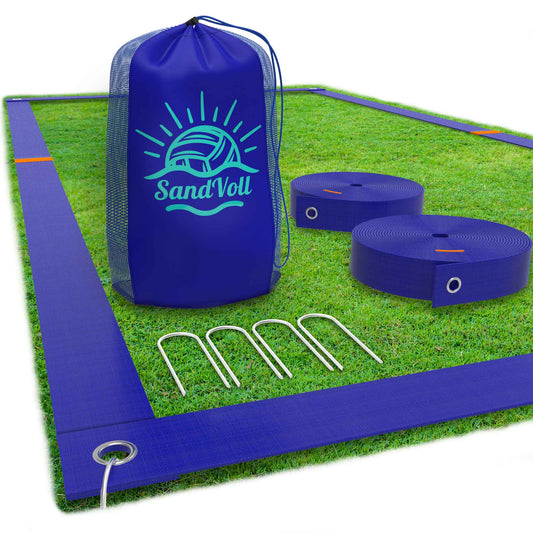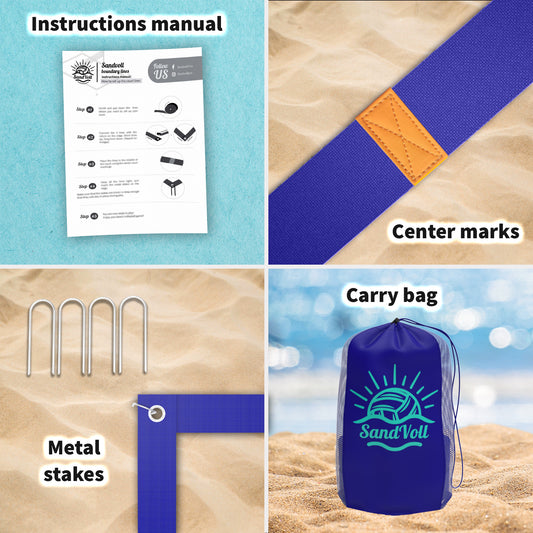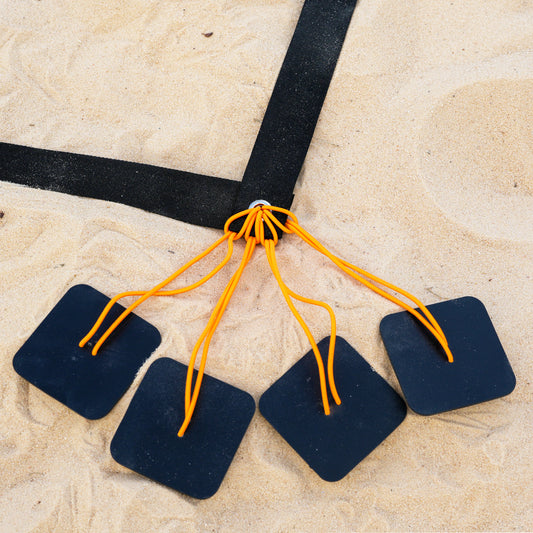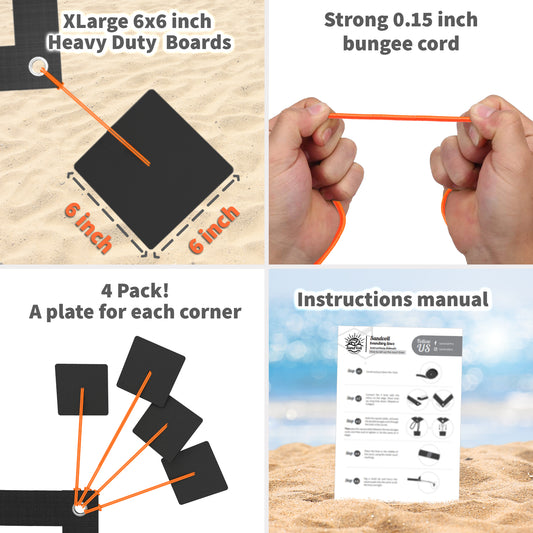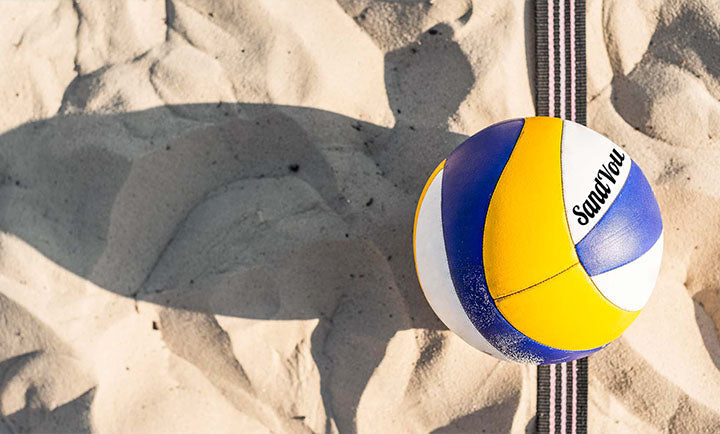
Marking Your Territory: A Guide to Beach Volleyball Boundary Lines
Share
Beach volleyball is a fun and exciting sport that can be played by anyone, anywhere. Whether you're playing with friends at the beach or competing in a tournament, it's important to know the rules and regulations of the game.
One key aspect of beach volleyball is the use of boundary lines to mark the playing area. These lines not only help to define the court, but also ensure fair play and prevent disputes between players.
In this guide, we'll take a closer look at beach volleyball boundary lines, including how to set them up and why they are important for the game.
What size are beach volleyball lines?
Beach volleyball boundary lines for doubles competition are 52’6” by 26’3”, as specified by USA Volleyball and NCAA Beach Volleyball.
A standard set includes two end lines and two sidelines, typically 2 inches wide. These lines are made from durable materials like nylon to withstand the sand and game conditions.
To keep the lines secure, players use stakes or plate anchors, with plate anchors being preferred as they stay buried in the sand better. The lines should contrast with the sand to ensure clear visibility during play.
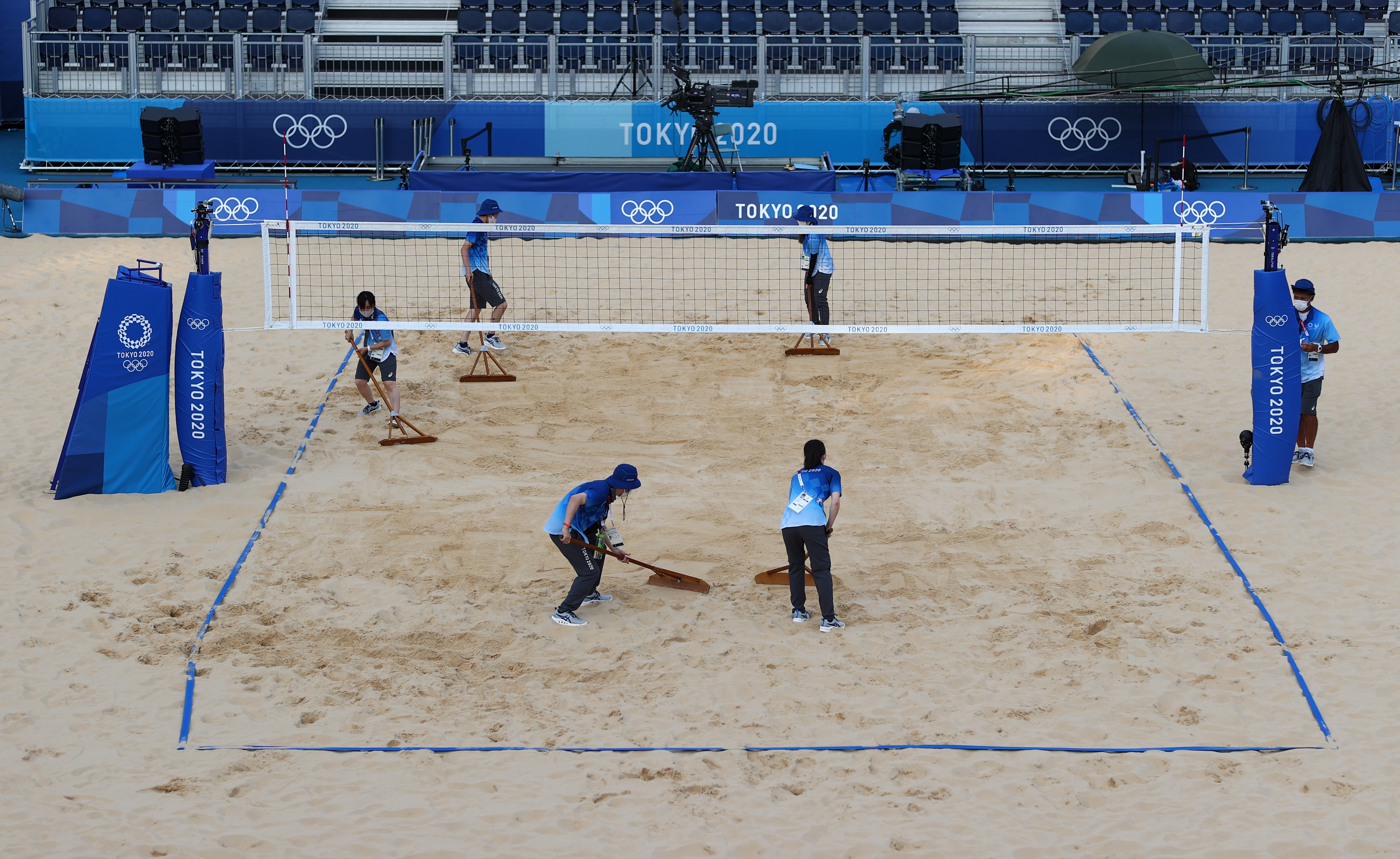
Is line in or out in sand volleyball?
In beach volleyball, if any part of the ball touches the boundary line, it is considered in.
This rule can be difficult to judge in real-time, even for experienced referees and line judges. When playing casually, it's best to trust each other’s calls and focus on keeping the game fun and fair.
While close calls may happen, maintaining good sportsmanship and respect is key to enjoying the game, regardless of the outcome.

How to Set Up a beach Volleyball lines?
To set up beach volleyball lines, you first need to take out the lines from their bag. If it's a set of four separate lines (two endlines and two sidelines), connect them on the edges. However, some sets of lines are made of one piece of long connected lines.
Once the lines are connected or laid out in position, find the center of the long sidelines using the center markers, usually marked with a different color from the lines themselves. Ask a friend to hold the center under the net, and then tighten the lines from each edge.
Using the stakes or plate anchors provided with the lines, attach the lines to the ground and make sure they are tight. To ensure that the rectangular court is not crooked, make sure that the endlines are parallel not only to themselves but also to the net.
Finally, check that the center marks are directly under the net to make sure both sides of the court are the same size.
- Take out the lines
- Connect the edges
- Find the center of the long side
- Tighten from each edge
- Attach the lines to the ground using stakes/plates
Taking the time to set up the court correctly will ensure that the game is played on a fair and even playing field.
Check out these videos to understand better how to set up your court:
In conclusion, beach volleyball boundary lines are a crucial part of the game. They define the court and determine whether the ball is in or out.
- It's important to make sure the lines are properly set up, including being made of a resistant material, contrasting sharply with the color of the sand, and including stakes or plate anchors to keep them secure.
- When playing with friends, it's important to trust each other's calls, but when playing in a league or tournament, it's crucial to have accurate line judges and referees.
Check out our SandVoll beach volleyball lines:





